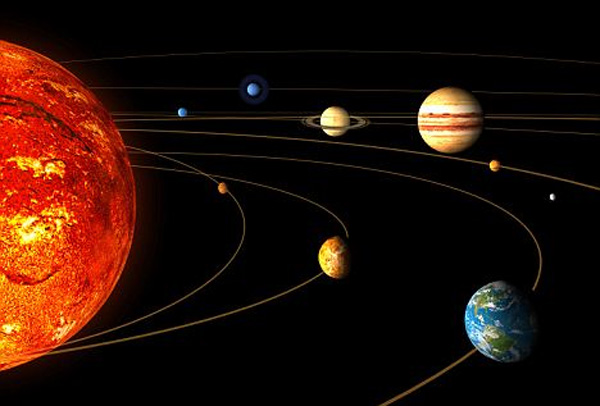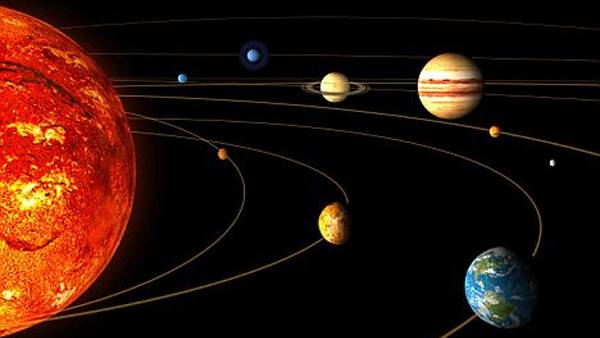Scientists find evidence of a mystery fifth giant planet that was ejected from the solar system
Source: dailymail.co.uk

The consensus among astronomers is that the solar system has always had four giant planets – Jupiter, Saturn, Neptune and Uranus. But now it’s claimed that it’s much more likely to have been home to a mystery fifth giant planet that got knocked out.
Computer simulations by David Nesvorny at the Southwest Research Institute in San Antonio, Texas, show that it is statistically extremely unlikely that the solar system began with four giants.
By his calculations, it only had a 2.5 per cent chance of reaching its current population and orbital layout with four giants, but was 10 times more likely to have developed to its present state if there was a fifth monster body in the mix.
To reach his conclusions Nesvorny ran 6,000 simulations of the solar system’s birth and early development.
He said: ‘The possibility that the solar system had more than four giant planets initially, and ejected some, appears to be conceivable in view of the recent discovery of a large number of free-floating planets in interstellar space, indicating the planet ejection process could be a common occurrence.’
It’s believed that Jupiter at one stage was gravitating dangerously towards the centre of the solar system, where Earth and Mars lie, but then suddenly ‘jumped’ to an orbit further out, knocking our mystery guest out into deep space.
The solar system began to take shape four and a half billion years ago when a huge cloud of dust and gas collapsed to form the Sun.
The planets arrived about 10 million years later, but had unstable orbits for a long time.
The Sun is about halfway through its life.
It will run out of hydrogen fuel and expand into a helium-burning red giant, killing the Earth in the process, in about five billion years.
Source:: dailymail.co.uk






















